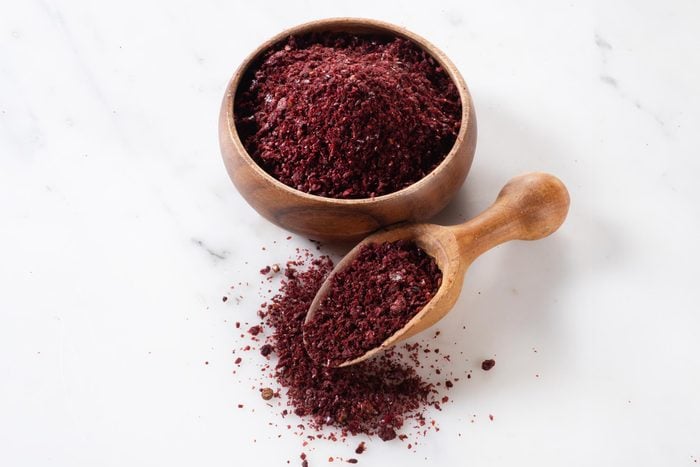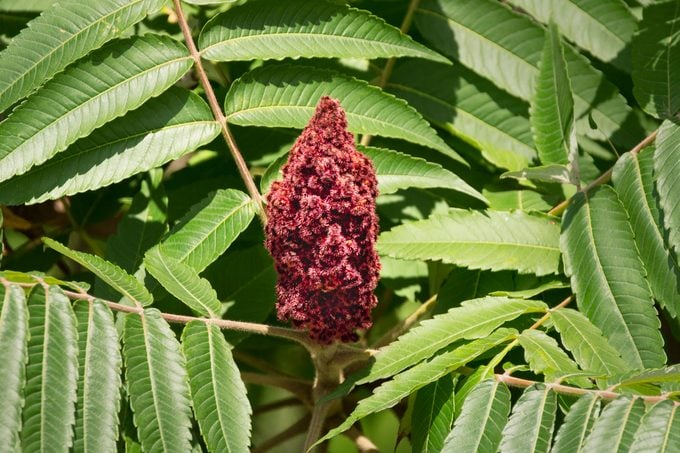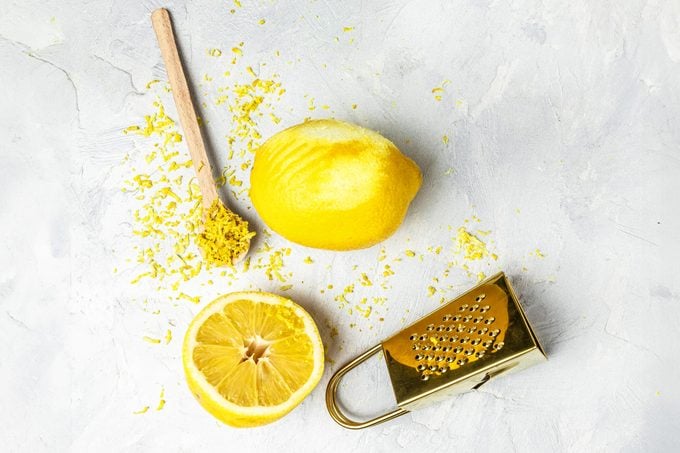What Is Sumac and How Do I Cook with It?
Updated: Mar. 18, 2024

Prized for the sharp citrusy flavor it brings to dishes, sumac has been used around the world for thousands of years and is now taking hold in America.
There are so few truly unique flavors left to encounter, but for many stateside cooks, sumac is one of them. A staple of Mediterranean cuisine for ages, this beautiful red berry lends a citrusy punch to dishes. It can stand alone as a seasoning, but it’s also part of a spice blend growing in popularity called za’atar. If you’ve been wondering what is sumac, it’s time to add it to your spice cabinet next to your other essential Middle Eastern spices.
Editor’s Tip: Mediterranean food is always a good idea. From light orzo salads to sweet baklava, these Mediterranean recipes will transport you to the seaside.
What is sumac?

While there are various forms of sumac growing around the world, the variety used most in cooking comes from a native bush growing throughout southern Italy and the Middle East. The bright red berries are harvested, dried and ground, resulting in a coarse powder with a dark purplish-red hue. Due to its coarse grind, the powder has more weight to it than cinnamon or allspice. It also imparts a beautiful color to foods when used as a surface spice, such as rubbing it into meats or vegetables before cooking.
What does sumac taste like?
Sumac has a bright lemony flavor without the sharp, acidic punch lemons bring to a dish—but don’t discount it as merely an alternative to citrus. There are earthy, sweet undertones to sumac that bring a brilliant complexity to the spice, allowing it to stand on its own and complement various dishes.
Is sumac good for you?
The flavor of sumac may have been the primary reason it became popular, but it didn’t take too long to figure out this spice has more to offer than just seasoning foods. Ancient Greeks first wrote about the health benefits thousands of years ago.
Today, researchers have discovered this spice is an antioxidant dynamo and is one of the most powerful anti-inflammatory spices you can find. It contains fiber, vitamins and healthy fats. Since Mediterranean diets have been long studied as a reason for the good health of people in the region, it makes sense that sumac, like other herbs and spices, plays a role in that.
How do you cook with sumac?

There are many ways to use sumac, from spice rubs to marinades and even desserts. You can also sprinkle it onto foods as a finishing touch, like sprinkling paprika over deviled eggs. The next time you make a classic hummus (or just want to spruce up a store-bought container of it), sprinkle sumac on top along with some good olive oil and coarse sea salt.
Consider sumac a component of a delicious spice blend or rub, or use it on its own to massage into vegetables, chicken, fish, lamb or beef before roasting or grilling. Its citrus notes also work well in salad dressings, like the dressing in a fattoush salad, or as a seasoning in the ground beef and lamb that tops the Armenian pizza-like dish Lehmejun.
Where can I buy sumac?
Most spice companies like The Spice House and Oaktown Spice Shop have sumac in their inventory, so check out their websites and shops. You can also find sumac at specialty grocers. You may have trouble finding sumac at your local supermarket, but don’t be afraid to ask your store’s manager to start stocking it.
How to Store Sumac
Whether ground into sumac powder or in whole berry form, sumac, like most herbs and spices, needs to be stored in an airtight container. This ensures the most potency of the spice for the longest time possible and will keep it from drying out. You can use a bottle with an airtight lid or a sealable bag, so long as it is generally tucked away in a cool, dry place.
What is a good substitute for sumac?

The flavor of sumac is very distinct, but if you can’t find it or run out in the middle of a recipe, there are a few substitutions you can make. Try lemon zest for a fresh citrus flavor without the sourness of lemon juice. Since, on its own, citrus lacks the depth of sumac, add a little freshly cracked black pepper along with the zest. If you have lemon pepper seasoning, that will also work in a pinch.
Sumac is also a main ingredient in a number of spice blends, like za’atar, so you can swap in some of that if you have that on hand. It’ll taste great, especially in this za’atar chicken recipe.
What sumac is poisonous?
Since most people have heard of poisonous sumac, considering using it as an herb can be confusing. But the overwhelming majority of sumac species are safe to eat. Only one, Toxicodendron vernix, produces toxic white berries that should not be used.
Like poison ivy, poison sumac contains a compound that will cause a rash and skin blistering. The rest of the sumac family produces deep red berries, which are safe. Knowing the difference is really only important if you intend to go foraging for sumac on your own. Any sumac you buy in the store will be the edible sumac.
